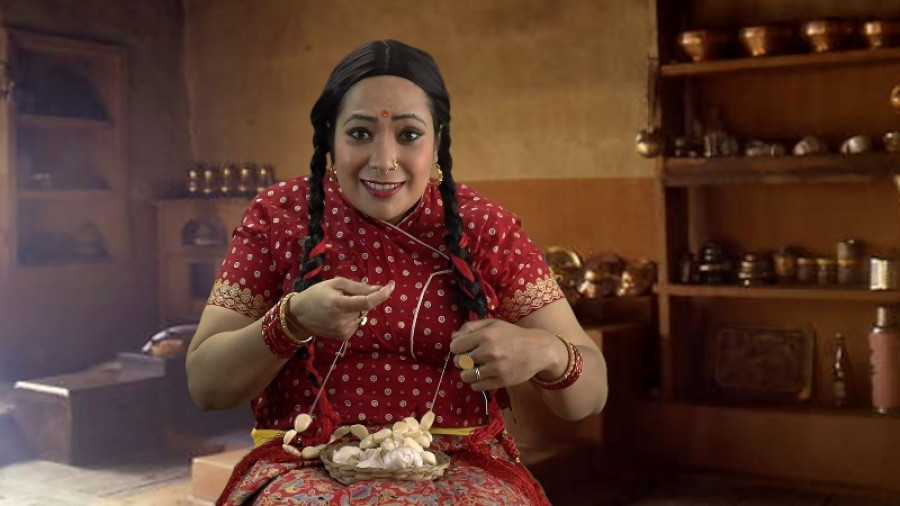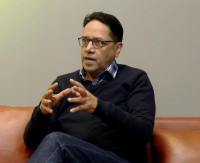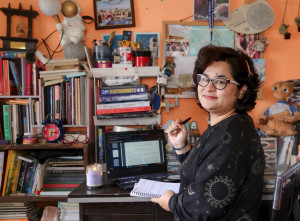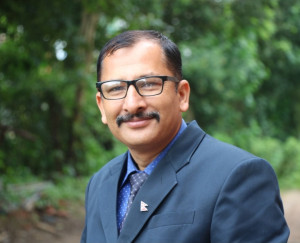Culture & Lifestyle
‘In times of crisis, art helps people heal’
Theatre artist Loonibha Tuladhar talks about her return as Pawankali, the celebrated Nepali television host, online.
Srizu Bajracharya
When Loonibha Tuladhar first made Pawankali’s debut in 2005, she was instantly popular and likeable. A typical Nepali woman from the country’s far west, Pawankali had a way around people. She was sassy, uncomfortably straightforward but sincere. She asked anything and everything to the luminaries who were invited in the show. And so, the fictional character had gone on to live, even after Tuladhar stepped down from portraying the character, through actors Tara Kandel and then Mampi Ghosh, with occasional portrayals by Tuladhar herself.
Now, Tuladhar is back as Pawankali, and she is just as exuberant and endearing. In her fariya and cholo, she looks much the same, but Pawankali has evolved: her aspirations have changed, says Tuladhar. Pawankali is no longer a village girl who wants to marry Rajesh Hamal; she is now in love with Anmol KC, jokes Tuladhar.
Her love interest aside, Pawankali is back to talk about issues that plague our society, to inform, to discuss, and, above all, to ask all the right questions—particularly in times of crisis. In an interview with the Post’s Srizu Bajracharya, Tuladhar talks about all this and more. Excerpts:
Many people are excited about the return of Pawankali. What was the inspiration behind making a comeback?
The lockdown was wearing me down, and because I have health issues, I was anxious too. Then, my husband suggested I should restart Pawankali, as she is a cheerful character and it would give people—and me—some relief and escape in this overwhelming time.
Before the lockdown, we were planning to make Pawankali’s comeback in April with Kantipur TV. This seemed like a good time for a comeback also because Pawankali was quite impactful when she was being aired, and we thought she could be instrumental in busting myths and raising awareness during this time as well.
Today, there are a lot of Nepali programmes that have characters like Pawankali hosting shows that tackle societal issues. Do you think Pawankali will be as relevant as it was when it started?
When I started Pawankali, it was because I was trying to save my job. It might sound impolite but I had received a notice that said that if I didn’t come up with an idea for a show then I would have to leave. That’s when I thought of starting a talk show with someone like Pawankali, who is inspired by a character in a drama ‘Pothi Basyo’.
Of course, today, a lot of things have changed. But I think Pawankali will still be a relatable character, more with people in their mid-30s or elders than younger ones who don’t have an idea about who Pawankali is. Those who are familiar will probably follow the show than those who aren’t. Plus, I think her character will be able to reach people, to get them to listen to news about Covid-19, but in an interesting way.
Do you think going online will help you reach a wider audience? How has the response been like?
The response has been quite positive; a lot of people in the comments have been welcoming the show. But besides that, I will be honest, it's the people who are close to me who have been telling me that they have enjoyed the shows more than others. The views have been humbling, but it’s not that many at the moment.
I am a person who loves television, and as a medium, I still think it is very powerful; it has an audience spanning across the country. The Pawankali Show has also been reaching out to children in a collaborative radio programme with Save the Children, every Sunday morning through various community radio programmes.
What are the challenges of working on a programme during the lockdown, from home?
Going online is still exploratory right now for many, as the lockdown was quite abrupt. And what we have been doing with Pawankali technically is still employing DIY resources. I have been using the camera equipment that I have with me, and I am lucky that I have a skilful family team. Some people have been complaining about the wig that I use, as it doesn’t look nice. This one does not fit my head properly. I am making do with what I have.
Fortunately, I have a very good team that is really supportive. And so, coming up with the content of the programme hasn’t been that challenging either. But there are certain things that really make it challenging, like getting proper videos from the guests and then sitting down to edit them. We also make sure that we shoot during the afternoon when all the neighbourhood pressure cookers are done whistling. Internet speed is another challenge, and then electricity. But I don’t want to complain, things have been better for us than for most people. It’s a challenging time and I hope we come out learning a few things from this.
When the lockdown will be over, how do you see the art industry recovering?
When the lockdown will be over, I believe people will still be afraid to gather and get back to their normal lives. Even the most powerful countries are struggling and are uncertain about the future. So, it will take time for that normalcy to come back—especially for theatre.
But our current situation has changed the way we see the world. And as humans, I feel this reality has made us more serious, sensitive and humble. Before the lockdown, much of our exchange was largely about materialistic gain—about money and time. But these days, I see that people want to help each other; they are more concerned about what effect the virus will have on things beyond themselves.
And a lot of people are falling back on art; people have been reading books to children, painting together. In such stressful times, it is wonderful to see this; hopefully, this tough time will help us value art more. In times of crisis, art helps people heal, I think.




 8.12°C Kathmandu
8.12°C Kathmandu















